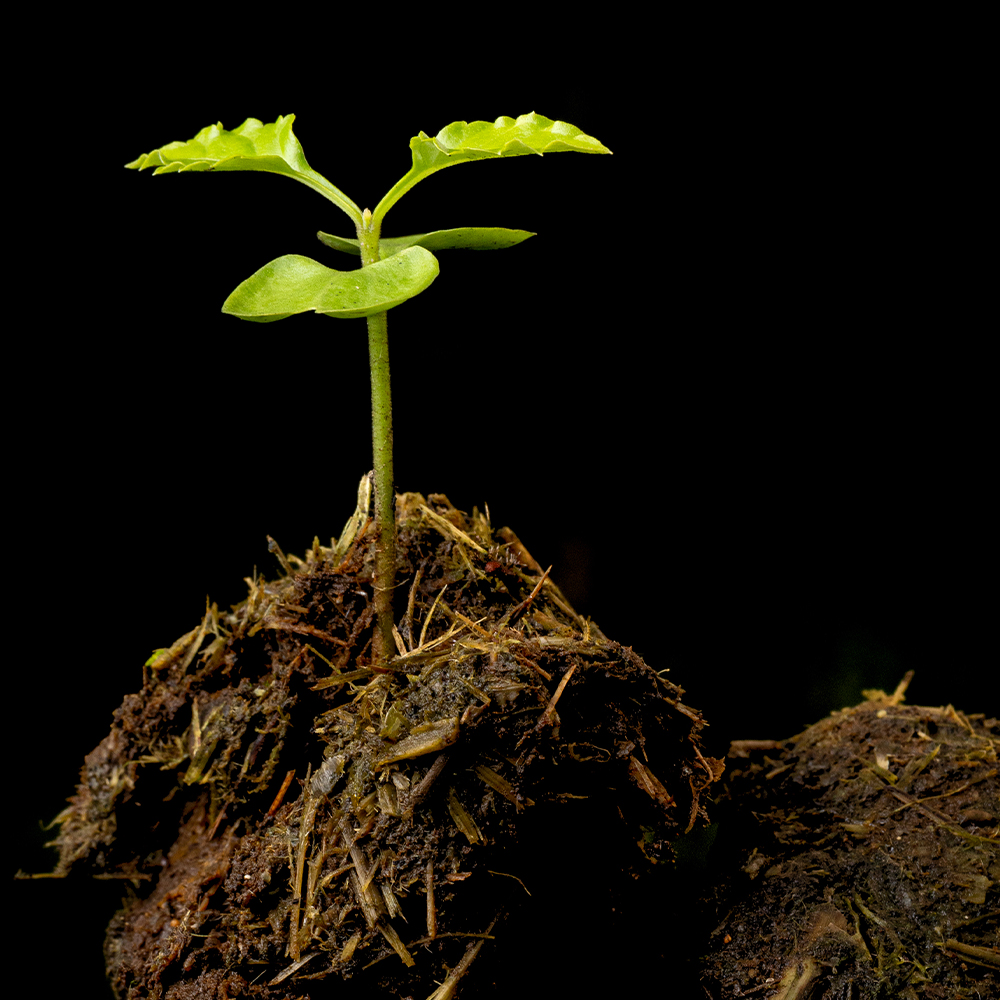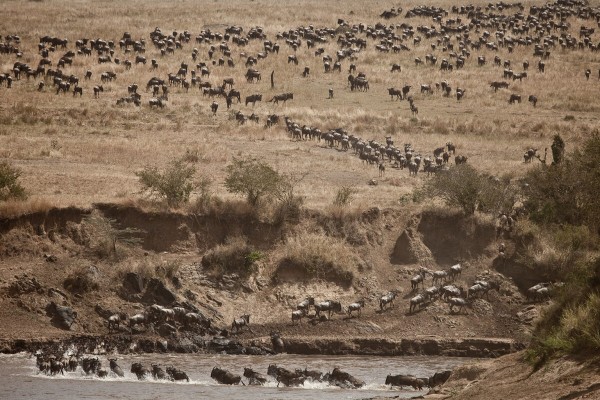Ciencia Rewilding animals could be key for climate: Report
페이지 정보
작성자 Benjamin 작성일 23-04-19 10:19 조회 559 댓글 0본문
by Liz Kimbrough on 30 March 2023
- A new report published in Nature Climate Change suggests that trophic rewilding, or restoring and protecting the functional roles of animals in ecosystems, is an overlooked climate solution.
- Reintroducing just nine species or groups of species (including African forest elephants, American bison, fish, gray wolves, musk oxen, sea otters, sharks, whales and wildebeest) would help limit global warming to less than the 1.5°C (2.7°F) threshold set by the Paris Agreement, according to the report.
- Animals play a significant role in how much carbon plants, soil and sediments can capture, as they redistribute seeds and nutrients and disturb soil through digging, trampling, and nest-building.
- The report emphasizes the need for a change in mindset within science and policy to take advantage of the vast potential of wildlife, while working closely with local communities to address social issues that can affect conservation efforts.
When it comes to climate solutions, your first thought may not be the wildebeest. But in the Serengeti, these buffalo-looking antelopes are the key to carbon capture.
Wildebeest eat large amounts of grass and recycle it back into the soil as dung. So when their population plummeted in the early 1900s due to a disease transmitted from domestic cattle, the loss of natural grazing led to more frequent and intense wildfires, turning the Serengeti into a carbon source.
Efforts to bring back or “rewild” the wildebeest population through disease management were a huge success, helping reduce the frequency and intensity of wildfires, and restoring the Serengeti back into a carbon sink.
Trophic rewilding, or restoring and protecting the functional roles of animals in ecosystems, is an overlooked climate change solution, says a new report published this week in the journal Nature Climate Change.
“The conservation of wildlife — allowing species to play their functional roles in ecosystems — offers untapped potential as a solution to climate change,” report co-author Andrew Tilker, the species conservation coordinator at conservation NGO Re:wild, said in a statement.
According to the report, rewilding just nine wildlife species or species groups (African forest elephants, American bison, fish, gray wolves, musk oxen, sea otters, sharks, whales and wildebeest) would contribute more than 95% of the annual requirement to achieve the global target of extracting 500 billion metric tons of carbon dioxide from the atmosphere by 2100. This in turn would helping cap the global temperature rise at less than 1.5° Celsius (2.7° Fahrenheit) below pre-industrial levels, as called for in the Paris Agreement.
 Wildebeest migration in the Maasai Mara. The recovery of Wildebeest numbers has helped turn the Serengeti ecosystem from a carbon source into a carbon sink. Photo by Robin Moore/Re:wild.
Wildebeest migration in the Maasai Mara. The recovery of Wildebeest numbers has helped turn the Serengeti ecosystem from a carbon source into a carbon sink. Photo by Robin Moore/Re:wild.“There’s a huge untapped potential to consider conserving wild animals as a climate solution,” report lead author Oswald Schmitz, a professor at the Yale School of the Environment, told Mongabay. “If you do some of the rough calculations, the numbers rival those of what the IPCC [Intergovernmental Panel on Climate Change] is right now promoting in terms of converting everything to solar or wind generation … the numbers are in the same ballpark.”
Reducing carbon emissions is an indisputable solution to addressing the global climate crisis, but even if we stopped burning fossil fuels immediately, the climate would continue to warm due to the excess carbon already trapped in the atmosphere.
“Fortunately, we have the technology to scrub CO2 from the atmosphere,” Schmitz said.“ “It’s called nature.”
Many nature-based climate solutions rightly emphasize the role of plants and soil as carbon sinks, but animals have a profound effect on how effective these sinks can be.
Through their movements and behaviors, animals distribute seeds and nutrients and disturb the soil through digging, trampling and nest building. All this action helps plants grow and store more carbon, and can even prevent wildfires. Animals can also keep carbon in the soil and sediment by changing how microbes and chemicals work in these systems.
For instance, an experimental study conducted in a tropical forest in Guyana found that the storage of carbon in trees and soil increased significantly, from 3.5 to four times, as the number of tree species increased from 10 to 70. However, as the number of mammal species increased from five to 35 on the same plots, tree and soil carbon storage increased by four to five times.
 A Baird’s tapir. Photo courtesy of Esteban Brenes-Mora/Re:wild.
A Baird’s tapir. Photo courtesy of Esteban Brenes-Mora/Re:wild. Jicaro danto tree (Parmentiera valerii) seedling growing from Baird’s Tapir dung. Photo © Michiel van Noppen.
Jicaro danto tree (Parmentiera valerii) seedling growing from Baird’s Tapir dung. Photo © Michiel van Noppen.However, taking advantage of the vast potential of wildlife will also require “a change in mindset within science and policy,” said report co-author Frans Schepers, managing director of Rewilding Europe.
The importance of natural climate solutions in achieving the Paris Agreement’s goals and enhancing biodiversity conservation is recognized by various global initiatives, including the U.N. Climate Action Summit and the U.N. Convention on Biological Diversity’s Post-2020 Global Diversity Framework. However, current natural climate solutions are focused primarily on protecting and restoring ecosystems like forests and grasslands, overlooking the role that animals play in supplying nutrients, reducing fire risks, and helping plants grow.
“Wildlife, throughout their interaction with the environment, are the missing link between biodiversity and climate,” Schmitz said in a statement.
However, as human activity continues to encroach upon natural habitats, animals are increasingly unable to fulfill their roles in ecosystems. Livestock agriculture, extractive industries, infrastructure development, and poaching are among the many human-caused threats that have resulted in the decline of wildlife populations. Of the 150,300 species evaluated on the IUCN Red List of Threatened Species, close to 30% are at risk of extinction, with many populations rapidly decreasing.
“There is urgency because we are losing populations of many animal species at the very time that we are discovering the degree to which their role in ecosystems can enable carbon capture and storage,” Schepers said in a statement.
The report suggests that to successfully reintroduce wildlife into areas where humans live, it’s important to work closely with local communities to address the complex social issues that can affect conservation efforts. This may include involving the local community in decision-making and governance processes, and taking into account their knowledge, values and attitudes toward rewilded species, as well as their cultural heritage, land rights and access to natural resources.
 Black-tipped reef sharks off Tetapare Island in the Solomon Islands. Photo by Robin Moore, Re:wild.
Black-tipped reef sharks off Tetapare Island in the Solomon Islands. Photo by Robin Moore, Re:wild.“I think there is real potential for synergies between wildlife conservation and carbon storage, [but] I am wary of anything like this being touted as a ‘global warming game changer,’” Yadvinder Malhi, an ecosystem science professor at the University of Oxford, who was not involved with the report, told New Scientist.
“The science is not yet robust enough and the timescales involved in many cases are too slow given the urgency of the climate crisis,” Malhi said. “Trying to get this into international climate frameworks could even be a distraction from the only real global warming game changer, which is keeping fossil fuels in the ground.”
Schmitz agreed, saying “we shouldn’t oversell any one solution.”
“Certainly, animals by themselves are not going to solve our climate problem,” he added, but rather by looking at climate and biodiversity together, “we end up creating a broader portfolio of possible solutions.”
One of the strengths in the rewilding solution, Schmitz said, is that people feel a connection to animals.
“When someone reads about [climate change] they begin to wonder ‘What can I do as an individual citizen?” Schmitz said. “This is where the animals come into play, because you’ve got animals in your backyard, and people have an affinity for that. And I think that’s one way that you can get people to feel like they’re helping to make a difference on this planet, in their backyard with the animals that they are familiar with.”
Banner image: A Baird’s tapir walking at night through her natural habitat, deep in the pristine cloud forest of Braulio Carrillo National Park in Costa Rica. Photo © Michiel van Noppen.
comentario 0
No hay comentarios registrados.

